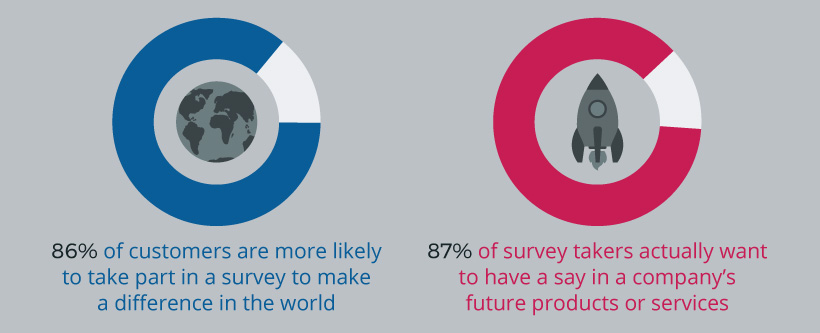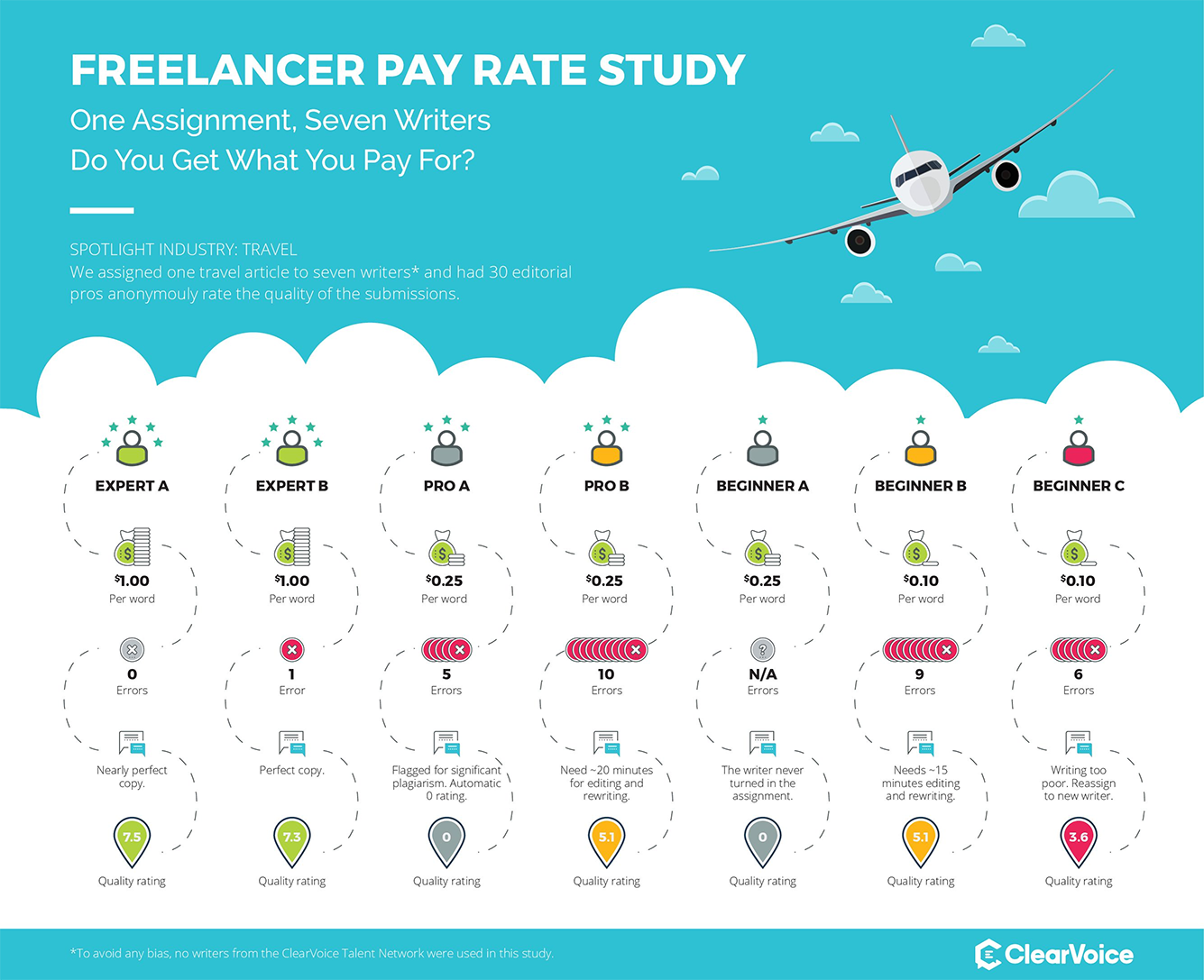Whether it’s blogs, infographics, white papers or social media, your marketing lives and dies based on the content you produce and share. While there’s no end to the plethora of content on the web, it’s not always great or interesting. To succeed at marketing, your content, however, has to be exceptional each and every time. So how can you give yourself the edge to ensure that your content outperforms your competition’s? Try creating content surveys.
Surveys of your customers, audience, and target demographics give you the insight and data necessary to put together content that speaks in relevant terms to them. The more that content is relevant to your audience, the better it’ll be received. And better-received content means more traffic to your website, more social shares, more leads, and, ultimately, more conversions. But you know this. So more to the point…
Here’s how you can incorporate online surveys into your research and content marketing.
Why online surveys?
If you’re a business, chances are good that you probably haven’t paid as much attention as you should to what your customers think of you. This includes questions about your brand in general, your latest marketing campaign, your voice and messaging style, etc. It’s pretty scary when you think about it: Many businesses who rely on their customers to remain profitable don’t always seem to care about their target demographic’s opinions!
Talk about a wasted opportunity. According to research:
- 86% of customers are more likely to take part in a survey to make a difference in the world
- 87% of survey takers actually want to have a say in a company’s future products or services

How surveys can influence and guide content marketing
Without some form of market research to understand why and for whom you’re creating content in the first place, you’re just flying blind. Just some questions you should be asking yourself during the content-marketing process are:
- What problem will this content help solve?
- Who’d be interested in seeing this content?
- Will this content be well received by our target audience?
Surveys can help to answer these questions before you put resources behind new content creation, ensuring that your next marketing campaign isn’t a flop. Case in point: Consider SurveyMonkey’s Audience panel. It’s a multi-national panel featuring panelists from more than 100 countries, which allows brands to conduct research to support their claims and obtain accurate data in a short period of time.
As Morgan Molnar, SurveyMonkey Audience’s Product Marketing Manager, puts it:
“You can then create data-backed authoritative content, and the survey data itself can also become the material for content marketing by way of articles or infographics.”
Case study: SurveyMonkey’s Shoulda Used SurveyMonkey campaign
SurveyMonkey’s Shoulda Used SurveyMonkey campaign uses humor and wit to drive home the all-important marketing rule that you’ll never pull off successful campaigns until you really understand your audience, customers or followers.
Devised by Bullpen Integrated Marketing, the campaign features misunderstanding, embarrassment and awkwardness to underscore the reality that you should always test your campaigns with your customers before publicly launching them.
In one campaign spot, a shopper is shocked to learn that a store’s “Know Your Customer Intimately” initiative is applied too literally with way too much physical touching. Check this spot below, or a more risque campaign spot here.
Using surveys to first poll your customers about the experiences your brand wants to give them before rolling them out is the safer and more accurate approach.
According to Gregg Rosenzweig, Bullpen’s Senior Director of Creative/Digital, they pitched the idea for this campaign to SurveyMonkey based on the raft of “high-profile misfires for big companies such as Pepsi (Kendall Jenner’s ad), Dove and Denny’s of late.” These high-profile missteps were big news stories in 2017 and caused massive Twitterstorms… for the worst reasons possible, unfortunately.
In all three instances, a good argument can be made that, had each company actually polled their customers and (beyond that) the broader marketplace before launching their ads, a lot of embarrassment and backpedaling (and hurried, breathless explanations issued to the media) would’ve been averted since they could’ve used the data to create ads not likely to gin up offense.
This begs the question, how, then, can you design surveys to get this all-important data?
How to get the best results from your surveys
Successfully using surveys for your marketing requires research, identifying your target audience, and testing your campaigns. Here’s how to optimize the surveys that you use for your marketing.
First off, you’ll want to understand your product intimately. “For any marketing campaign to hit the mark you need a clear understanding of the value your product/service offers, target the customers who will value this offering the most, and find a creative expression that connects the two in a fresh, engaging, and direct way,” says Lakshmi Hari, SurveyMonkey’s Head of Integrated Marketing.
Then, you’ll want to narrow down your target customer for your campaign to only the significant use cases where they value your product the most.
Finally, you need to actually test your campaign with independent voices, such as an external panel/focus group of your target customers. Tools like SurveyMonkey’s Audience help you do this very easily. As opposed to merely having your own biases confirmed, using external voices can ratify your campaign as something that’s indeed worthy of your audience.
Case study: ClearVoice’s editorial and freelancer surveys
ClearVoice has its own example of using surveys to help inform its content. This past summer, their team used surveys to help shed light on the correlation between freelance writer pay rates and the quality of the copy they turn in.

This case study looked at whether freelance writers who charge more for travel articles really do submit more high-quality work than those whose rates are lower. The results confirmed that, yes — on everything from the experience factor to storytelling to the long-term cost-savings — hiring more expensive freelance writers is advantageous for brands. Their findings added more support to the old credo: You get what you pay for.
Also see other survey-supported content on ClearVoice, such as a tech writer pay study and an article on factors in determining freelance writer rates.
Research for better marketing
Online surveys are the basis for the accurate, independent research that should go into all of your marketing campaigns, whether a new ad, rollout or initiative. Once the ad’s out there in the public — and if you go on bad data or, worse still, no data at all — the chances for self-inflicted disasters are huge! Talk about wasting time, money and effort — not to mention having to clean up your brand’s reputation after the fact.
Avoid all this unnecessary hassle by using online surveys before you begin the actual marketing-campaign creation. The rich data you’ll gather will empower your brand to make the right decisions specifically targeted at your brand’s audience for maximized results and ROI.
Anything else is just messing with your brand’s reputation — and you’ve worked too hard to want that to happen.



